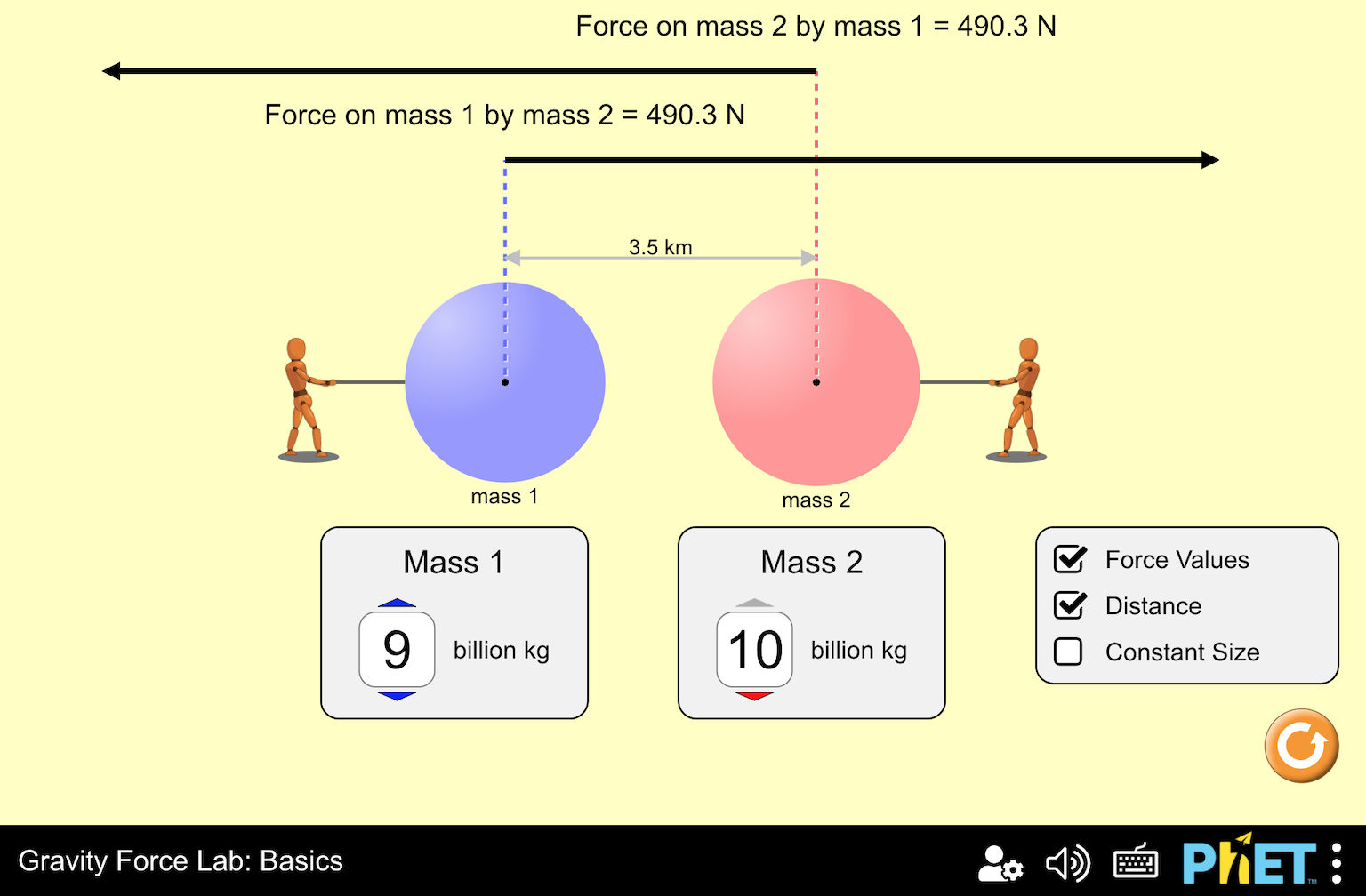


Now let us take away the first sphere and replace it by a different sphere located a bit further to the right. The force on the test particle is represented by the blue arrow – the arrow’s direction shows the direction of the force (an attractive force, so the arrow points towards the sphere) and its length represents the magnitude of the force (in this case two Newton – twice as long as the reference length representing one Newton, shown on the bottom left):

Here is a sketch showing the sphere on the right at the location M1 and the test particle on the left at location A. Thus, we can use the particle as a probe – we keep track of the force exerted by the spherical mass as we move the particle to different locations.Īs an example, say that when our test particle is at location A, the gravitational force pulling it towards the sphere has a magnitude of two Newton. The particle’s mass is so little that its presence does not significantly alter the situation. We can chart the gravitational influence which this sphere exerts on other masses in its vicinity (in physics-speak, the sphere’s gravitational field) by keeping a record of its influence on a small test particle. In front of us, there is a sphere drifting in space. Imagine that we are in deep space, far away from all sizeable masses such as planets or stars. In short, gravity can beget further gravity – where gravitational systems are concerned, the whole is not the sum of its parts. One reason why the physics of general relativity is much more difficult than that of Newton’s theory of gravity or the theory of electrodynamics is a property called non-linearity. General relativity: a theory with non-linear laws.Goodbye to the building blocks: Energy as a source of gravity.The building blocks of Newtonian gravity.


 0 kommentar(er)
0 kommentar(er)
